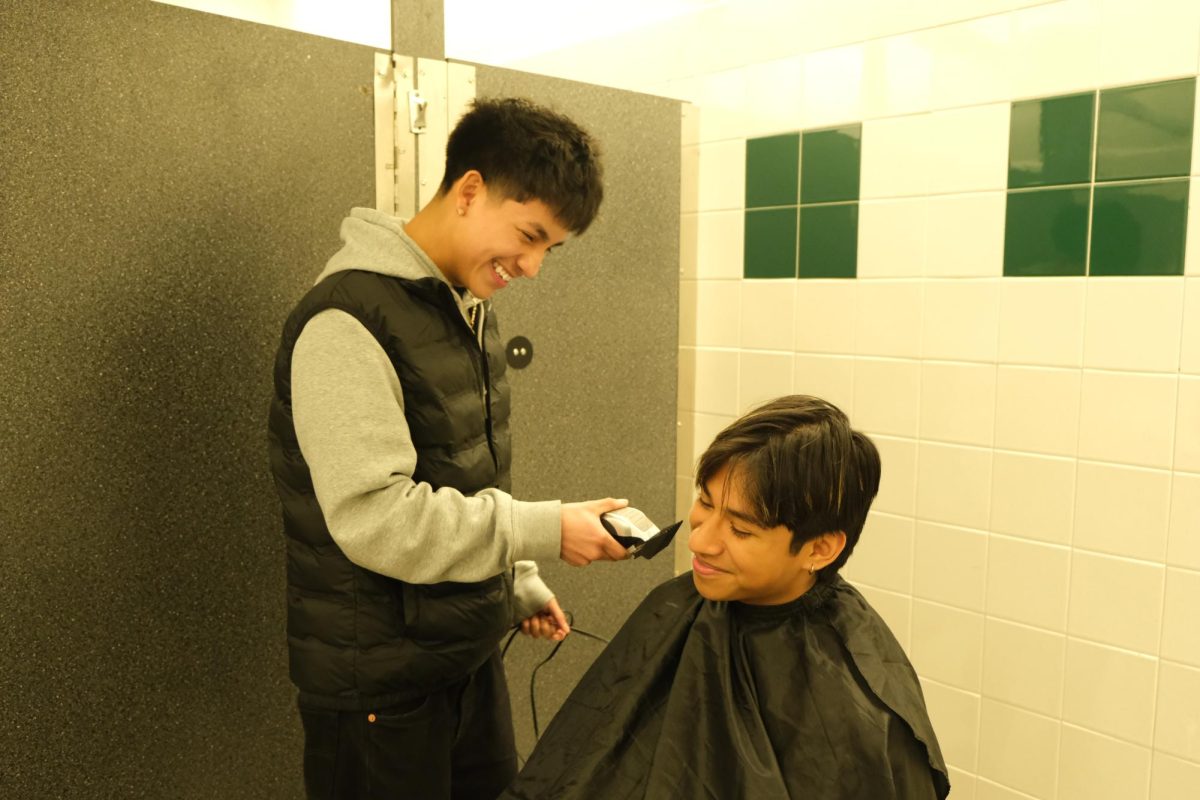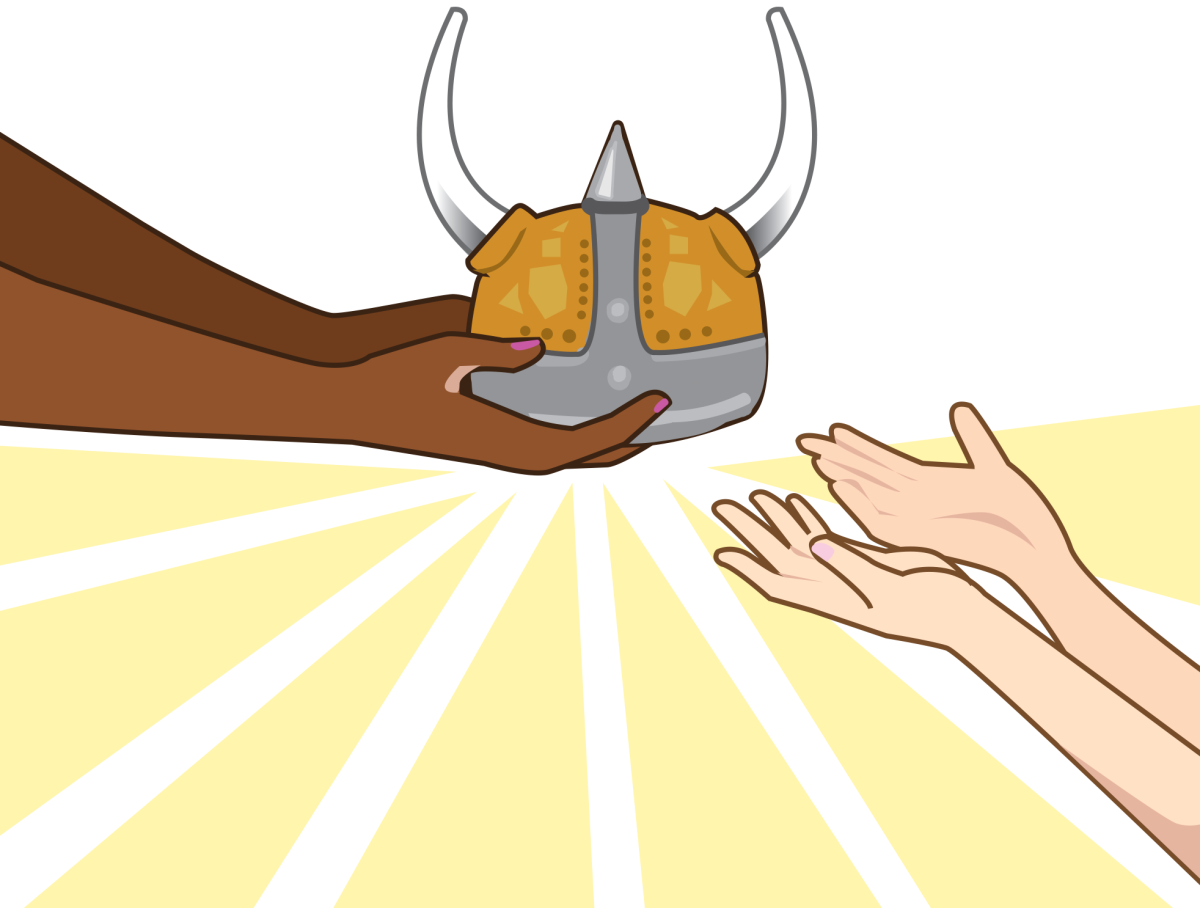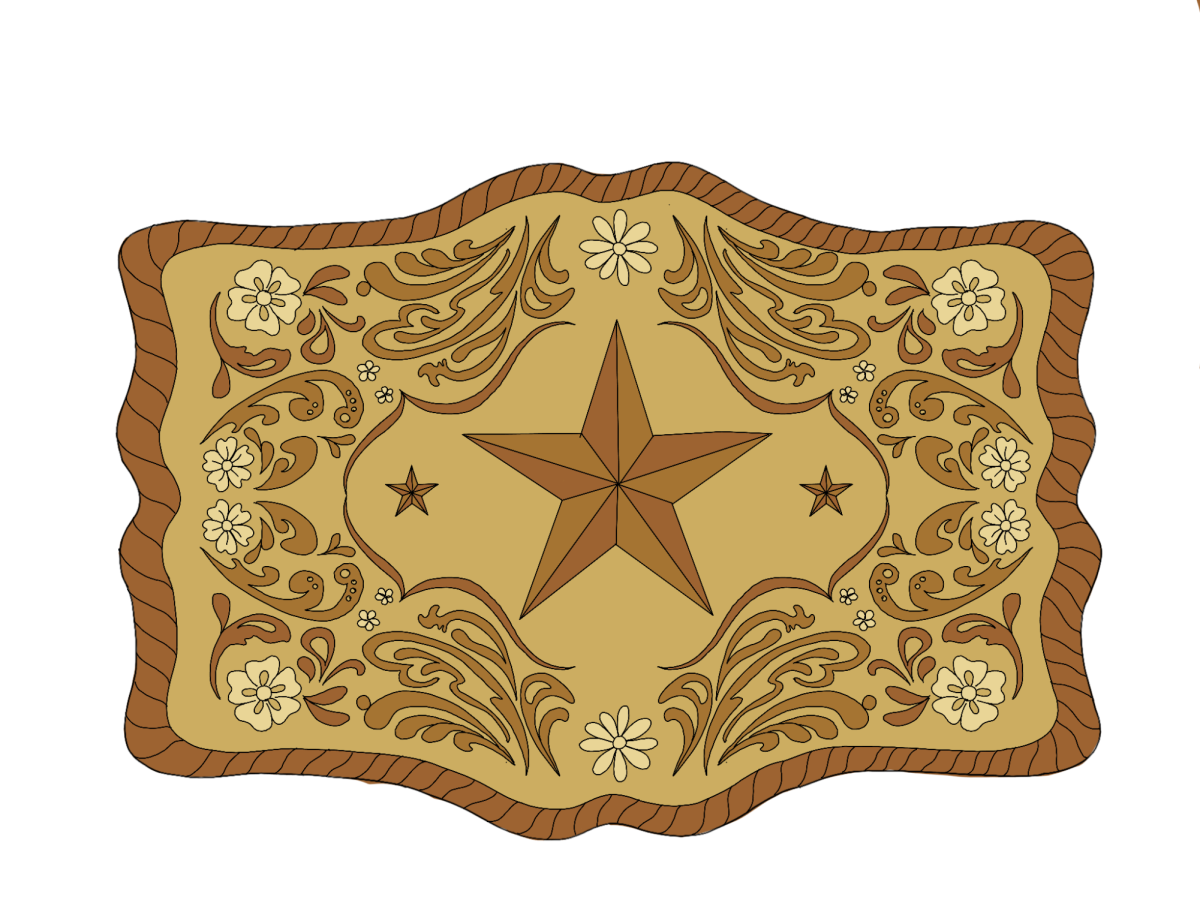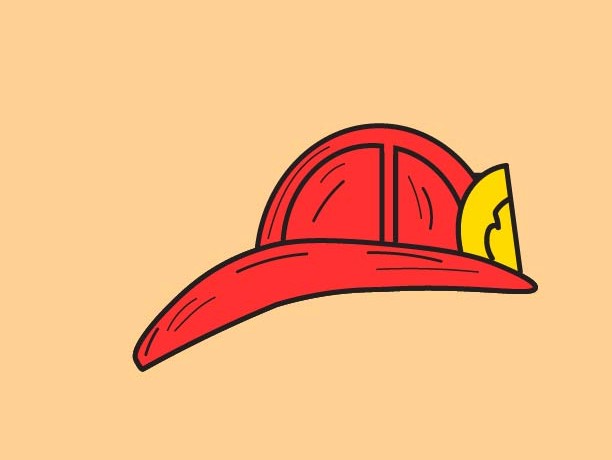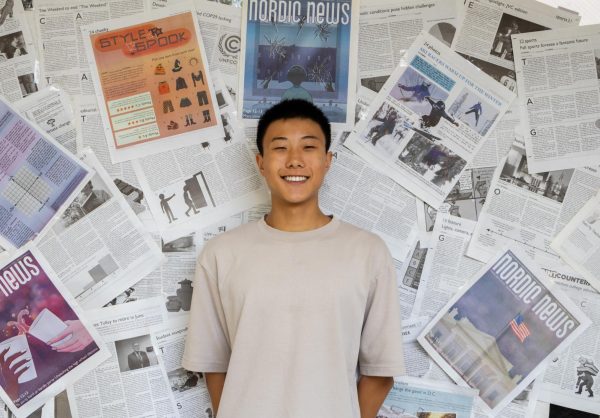Hairstyles are a form of expression and a source of confidence, and as styles have changed and become more personalized, the demands put on barbers have also become harder to tackle. To take on this challenge, some students have picked up shears, combs and curling irons, aiming to provide this essential service to themselves and their peers in this new era of cosmetology.
Senior Cooper Richter (he/him) said that he and his brother always got their hair cut by their father. However, a year ago, Richter said he decided to learn to do it himself, because his father could never get it exactly as he wanted it.
“I decided that maybe it’s time to take it in my own hands,” Richter said “At least I’m in control of most of it. Then from there, I just gradually figured out how to do it for myself and gained enough confidence to do it for others.”
On the other hand, junior Jonathan Rodriguez (he/him) started to cut hair primarily to rake in some extra cash. He began meeting many new people as he built his skills and reputation as a barber. He also says that cutting hair has taught him essential skills, specifically in time-management.Now, he sees it as a viable career option.
“What made me start is just I wanted a side hustle — something that made money,” said Rodriguez. “The more I started doing it, the more I really liked it.”
Senior Alex Arreola (he/him), who is Rodriguez’s longtime friend and soccer teammate, has been a client for three months now. Although initially nervous, he allowed Rodriguez to cut his hair due to the rising prices of haircuts in barber shops. Arreola said that he usually pays $40 to get his hair professionally cut, while Rodriguez only charges around $20. Although the easier pricing was the initial factor that led Arreola to Rodriguez’s services, Arreola said there’s a sense of connection and flexibility that doesn’t exist with professional barbers.
“So doing it professionally, I guess the actual experience of getting your hair cut is very fast,” Arreola said. “I wouldn’t say robotic, but in a way, it’s like you go there, you just get it done and it’s not very personal. But with getting a haircut from Little Johnny, he builds a relationship with you. He’s able to give you advice on your hair, and that overall connection kind of makes me more confident with him giving me haircuts in the future.”
Similarly, Richter said that cutting hair has helped him cultivate friendships. He said that cutting hair is fun because he can provide something that his clients are satisfied with. This hobby has even helped him meet new people and improve his communication skills.
“We kind of build a connection,” Richter said. “They trust me when I’m cutting their hair, and they trust me with the clippers. Then I guess I can help them feel confident in themselves. So it’s a pretty cool dynamic. You wouldn’t think would come from something as simple as cutting hair.”
For Arreola, unlike traditional, professional barbers, he can comfortably chat with Rodriguez, giving feedback and receiving suggestions. He said that because of this, Rodriguez’s quality is comparable to that of professionals.
“Usually I tell a regular barber what to do. Like, that’s pretty much it,” Arreola said. “But with Little Johnny, while he’s cutting my hair, we’re able to make changes in the middle of a haircut. He would say something like, ‘Okay, I do this instead, I think it’ll look better.’ And I’d be more willing to say ‘yes’ or ‘no’ and talk about that rather than with a traditional barber.”
Senior Kayla Tran (she/her), who also styles hair as a hobby, said that comfort makes the haircut experience and result better. Tran said that in professional salons, many people, including herself, are often scared to voice their opinions. Tran said that the discomfort of a professional stylist makes people too shy to speak up and there isn’t a sympathy towards each other.
“I feel like you’re more open (to peer stylists), like, ‘Oh, I don’t like this.’ Or you’re like, ‘Oh, that hurts,’ Tran said. “There have been times where I’ve gone to the salon, and they just mess up my hair, and I’m just like, trying to fight tears and say, ‘Yeah, I like it, it’s cute.’”
Tran began styling hair in third grade by braiding her friends’ hair, and eventually, she began to dye hair as well. She said that she grew up interested in cosmetology and decided to learn the craft after nobody could style her hair according to her particular requests. She did so by watching various YouTube channels with her mom.
“I just thought it was fun — doing hair, fashion, and makeup in general,” Tran said. “I think it’s a good way to express yourself, so I just thought it was interesting.”
While there are some downsides to being a student stylist, like being overwhelmed by requests from other students, Tran enjoys it because she can help improve the self-esteem of her peers.
“I’m just nervous that they trusted me with their hair, and it just didn’t turn out. But if they do like it, then I feel really happy because I made you feel better,” Tran said, “Whenever my hair looks bad, I feel like I look bad. I can have no makeup on, but if my hair looks good, I feel good, and I know some of my friends feel that way, too. So if their hair looks good, and I contributed to that, I feel really happy.”



